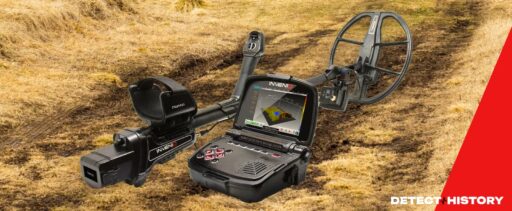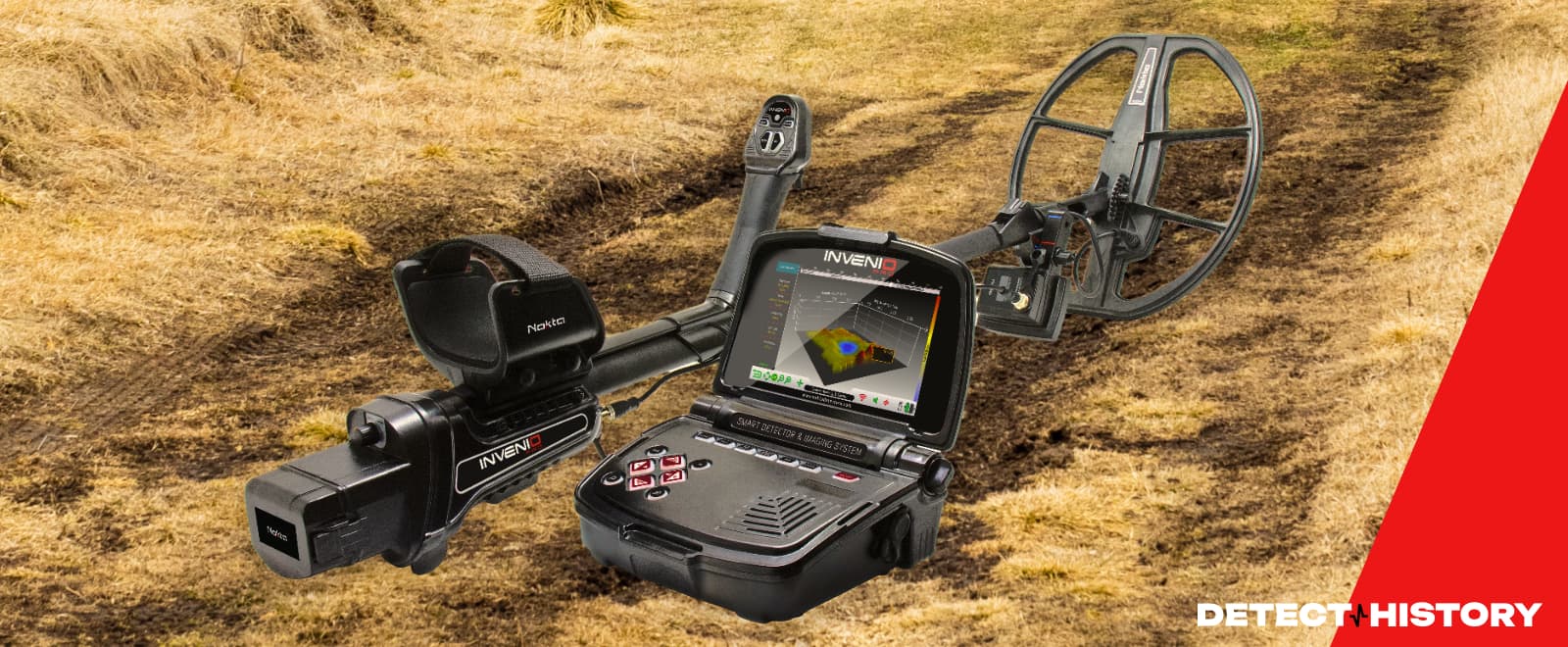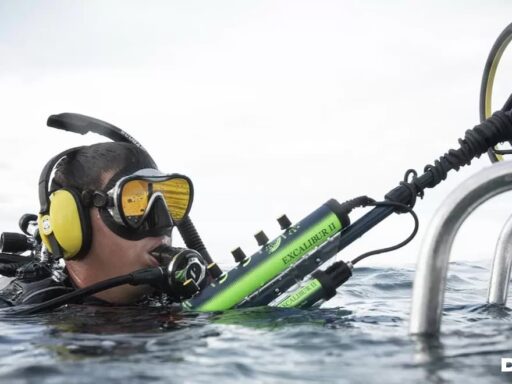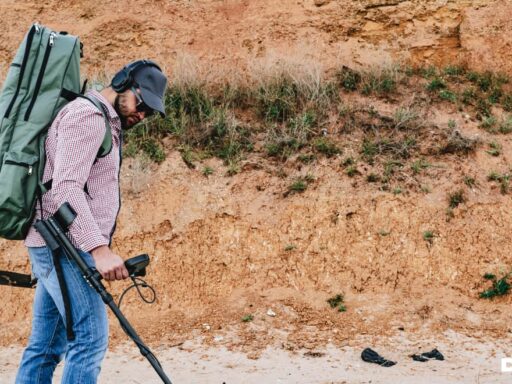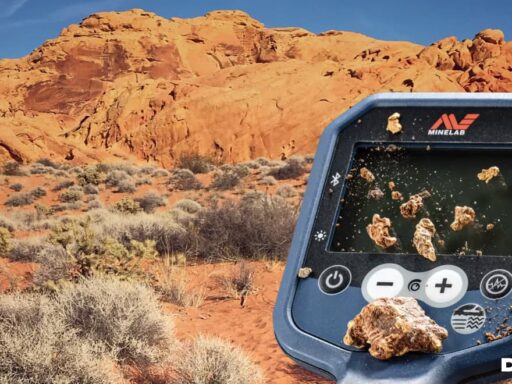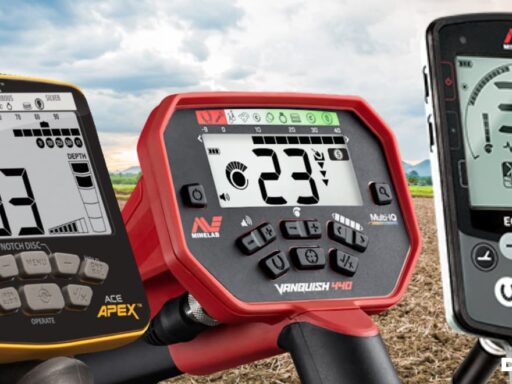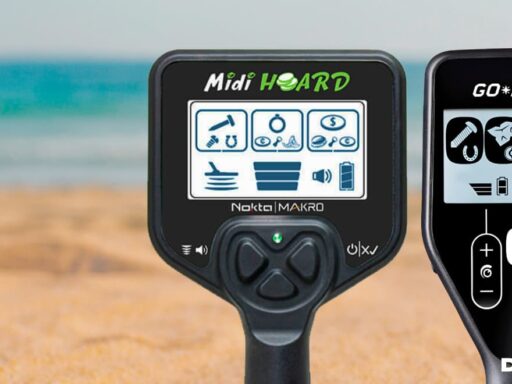Many metal detectorists in their career reach a level at a certain point of time when they start looking for metal detectors providing a better depth of reach. However, there is no single answer about what deep seeking metal detector to buy, because different machines fit different needs at different times.
This table was created for your convenience, to help you learn the differences between machines, and choose preferred device faster and easier.
If you are not yer sure about the features and functions of the device you need, please feel free to read the full overview on deep seeking metal detecting below.
Best Deep Seeking Metal Detectors 2024
| Rank | Metal Detector | Highlight | Rating |
|---|---|---|---|
| 1 | Nokta Invenio | The best deep seeking detector with 3D Imaging technology | 9.0 |
| 2 | Fisher Gemini-3 | Best 2-Box metal detector with positive reviews | 9.0 |
| 3 | Nokta Makro Jeohunter 3D | Good budget-friendly deep seeking metal detector | 8.4 |
Nokta Invenio
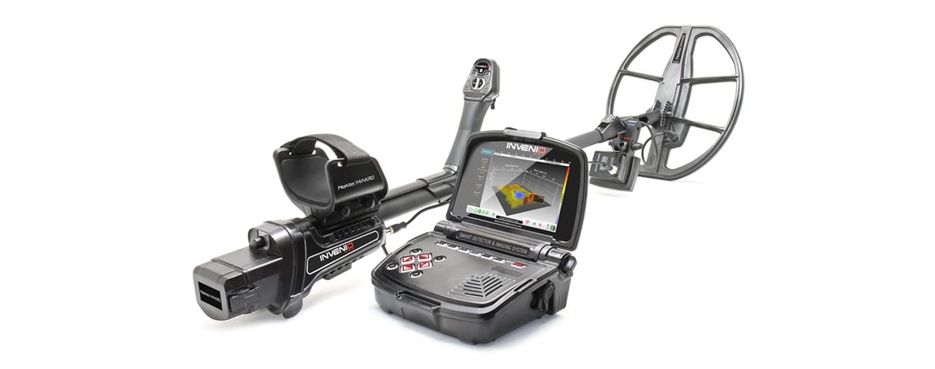
Invenio by Nokta is probably the machine you want to get if you are interested in deep detecting, although it is probably the most expensive metal detector. Its main features and functions include embedded Linux OS, frequency shift to avoid electromagnetic interference, high quality display, real time smart detection and imaging system to show targets in 3D projections, outstanding discrimination and high recovery speed.
Invenio shows the targets visually on the screen, plus, it is multi-purpose, allowing to spot coins, relics, hoards, but also ground anomalies, caves, tunnels, etc. In other words, technologies behind Invenio enable the user to see underground. The machine software is available in 17 languages.
| Technology: | VLF (3D Imaging) |
| Frequency: | 14 kHz |
| Search coil: | 11”x7” / 15”x13” / 22”x15” DD Coils |
| Waterproofness: | Coil only |
| Software: | Updatable |
| VDI (Target ID): | Available |
| Search Modes: | Basic, Expert, Ground Anomaly and Cavity, All Metal, Fast, and Deep |
| Ground Balance: | Manual, Automatic, Tracking |
| Pinpoint Mode: | Available |
| Audio Tones: | 150Hz – 700Hz adjustable |
| Batteries: | 7.4 V 5500 mAh Li-Po |
| Weight: | System Box: 3.75 lb (with 5500 mAh battery); Shaft and Handle: 5.29 lb |
| Warranty: | 2 years |
Pros
- Advanced and efficient;
- 3D Imaging for better target identification;
- Highly adjustable;
- Ergonomic design;
Cons
- High price;
- Pretty heavy;
- Complicated for operation;
Overall Score – 9.0/10
All Purpose – 9/10
Key Features – 10/10
Easy to Use – 8/10
Durability – 10/10
Price – 8/10
Fisher Gemini-3
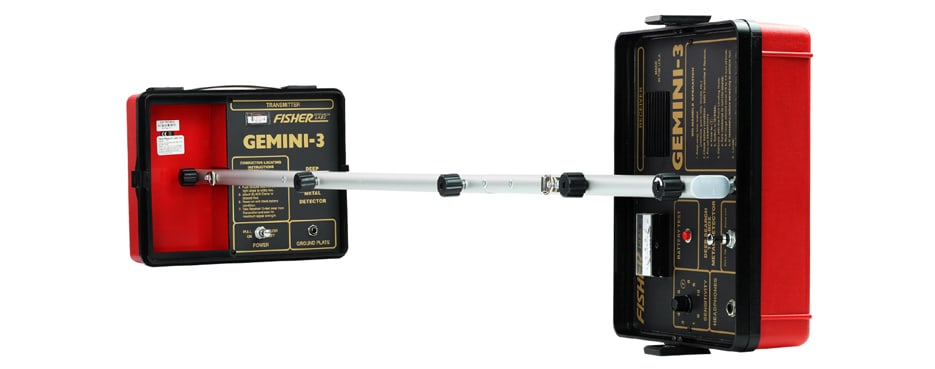
Fisher was the first company to make a 2-box metal detector. Two boxes (basically they are search coils) provide better reading of the response, because one box is transmitting and the other one is receiving.
Four different search modes allow spotting metals and ore veins, and shows itself well generally with bigger deep targets. One of the best things about Fisher Gemini-3 two box metal detector is that the user can perform a wide scan, by placing the transmitting and receiving boxes on a bigger distance than the deep ground metal detector shaft.
Wide scan can be used for some engineering, geological or archaeological purposes. Two boxes being separable provide unseen variability in methods and performance. Maximum depth of reach is up to 20 ft.
| Technology: | VLF (Two-Box) |
| Frequency: | 82 kHz |
| Search coil: | Two Boxes |
| Waterproofness: | Not a waterproof |
| Software: | Not updatable |
| VDI (Target ID): | Not available |
| Search Modes: | Wide Scan Inductive Search mode, Narrow Scan Inductive Search mode |
| Ground Balance: | Manual, Automatic |
| Pinpoint Mode: | Not available |
| Audio Tones: | 1 level of audio |
| Batteries: | 8 x AA Batteris |
| Weight: | 7 lb |
| Warranty: | 5 years |
Pros
- Comparatively budget-friendly;
- Quite easy to operate;
Cons
- Not water-resistant;
- Comparatively heavy;
- Not very good on mineralized ground;
Overall Score – 9.0/10
All Purpose – 9/10
Key Features – 7/10
Easy to Use – 10/10
Durability – 9/10
Price – 10/10
Nokta Makro Jeohunter 3D
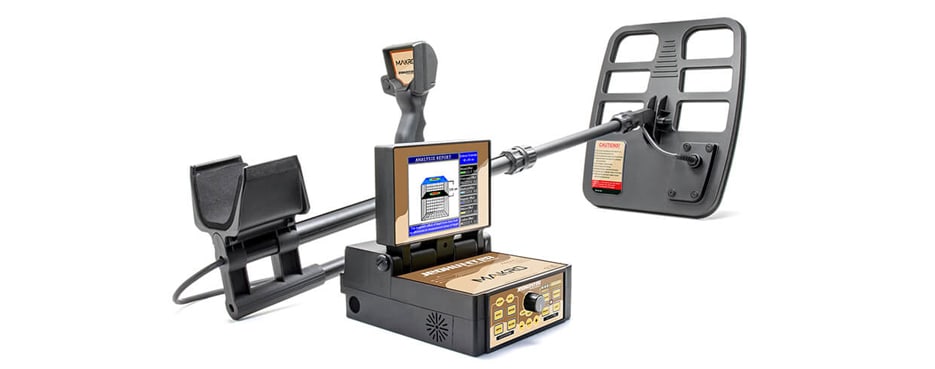
Jeohunter 3D by Nokta Makro is a highly adjustable best deep search metal detector that offers complicated and versatile scanning modes with a wide range of analysis tools for the scans. It has two separate scanning systems – LCD and LED, is equipped with an advanced Oscilloscope, shows depth and shape of the target. The files can be recorded and examined for better understanding of the response and scans.
Maximum depth of reach varies from 13 to 40 ft; the detector spots metals, minerals, and anomalies like cavities. Four types of metals can be detected – Gold, Non-ferrous, Steel and Iron. At the time of writing, the detector is available in 2 languages.
| Technology: | VLF |
| Frequency: | 12 – 13 kHz |
| Search coil: | Square DD Surface 210×315 mm, General 360×440 mm, Deep 600×1000 mm |
| Waterproofness: | Coil only |
| Software: | Not updatable |
| VDI (Target ID): | Not available |
| Search Modes: | N/A |
| Ground Balance: | Manual |
| Pinpoint Mode: | Available |
| Audio Tones: | Adjustable |
| Batteries: | Ampere Li-Po Rechargeable |
| Weight: | 5 lbs – 18 lbs (Coil Dependent) |
| Warranty: | 2 years |
Pros
- More budget-friendly than models described above;
- Versatile;
- Waterproof coils;
Cons
- Requires skills and knowledge;
- Not very handy for carrying;
Overall Score – 8.4/10
All Purpose – 8/10
Key Features – 8/10
Easy to Use – 8/10
Durability – 10/10
Price – 8/10
Differences Between Deep Seeking Metal Detectors and Basic Hobby Detectors
Treasure hunters making their first steps in the sphere of deep metal detecting will find this section useful, since deep search is a more complicated part of the hobby, that has its own separate complicated terms and notions.
If you are new to this sub niche, take a look at the terms and features below; if you are a seasoned detectorist, feel free to skip the terms and move on to the reviews.
2 Boxes (Coils)
Many deep seeking machines actually feature two coils or boxes. Don’t be scared of that weird configuration, the concept behind two boxes/coils is that one of them is transmitting, while the other one is receiving.
Low Frequency Level
Low operating frequencies are usually especially good for deeper targets. This is why many deep seeking machines have operating frequencies varying from 5 kHz to 7 kHz.
Depth of Search
Average hobby metal detecting reaches up to 4-8 inches. Middle-range machines can detect items at around 30 inches, while deep seeking machines reach up to 65 inches.
Identification of Large Targets
The general rule of thumb is that larger items can be identified best at deep levels; the smaller the target, the harder it is to spot, even with high quality detectors.
Special Skills Needed
Most deep seeking machines require special skills, knowledge, and previous experience from a detectorist, to use the device properly, and interpret the signals right.
Price
Deep seeking metal detecting gadgets are not cheap; on average, the price varies up to $30.000 for a machine and compatible kit.
Deep Seeking Metal Detectors Technologies
Technologies for deep seeking machines are not the same, because various manufacturing brands have different patents and innovations, they compete with each other all the time, and apply different methods to achieve similar goals. As a result, potential users have to be aware of different technologies, functions, and features offered with this or that machine.
A short overview of the most widespread technologies for deep ground penetrating metal detectors below will be beneficial for both beginners who make their first steps in deep detecting, and seasoned detectorists who look forward to upgrading their existing equipment. The more you know about available technologies, the more informed choice you can make.
Very Low Frequency (VLF)
VLF – Very Low Frequency – technology is quite widespread among hobby metal detectors in general, because it is very versatile and almost universal for this hobby. However, when we are talking about deep seeking metal detectors, VLF machines are more suitable for newbies in the field. VLF deep seeking machines send the electric field through the ground via the transmitting coil, and then receive the response from metal objects via the receiving coil. Separate coils for transmitting and receiving the signal provide smoother performance and more comprehensive signal from deeply buried targets which are always harder to interpret. VLF machines seem to be the best for discovering jewelry or coin hoards.
3D Imaging Systems
This extremely advanced technology was improved by Nokta Makro and the concept behind it is the possibility to see the actual scan of the objects located underground. It is basically for the first time in the metal detecting and treasure hunting hobby, among all technologies, 3D Imaging Systems makes potential targets visible to the detectorist. Valuable metals and iron metals alike are displayed in full color. The system not only gives audio signals based on electromagnetic response of the metal objects underground, it also interprets the response and creates scans of the objects, to show them to the user visually. Such valuable additional information about the targets helps the user to make better decisions about their searching activity.
Pulse Induction (PI)
Pulse Induction technology is quite efficient for hobby metal detectors in general, but for best deep ground metal detectors, it is very helpful, because it gives rather precise data about potential targets. PI metal detectors send a constant series of rapid short electrical pulses. These electrical pulses saturate the ground, creating a powerful electromagnetic field that makes metal items within its reach to respond powerfully. PI technology differentiates between ferrous and non-ferrous metals, and reads the responses very well to create informative 2D scans. Pulse Induction provides high quality performance in a wide range of ground conditions, thus being really convenient and effective for deep search where interpreting the signals from potential targets is especially hard.
Gradiometer
Gradiometer metal detectors have two magnetic sensors on their probes – one analyzes the positive signals while the other analyzes negative signals. The technology allows to spot and determine whether the object or potential target underground is metal, mineral, or cavity. Increasing positive value and decreasing negative value indicate metals. Decreasing positive value and increasing negative value indicate cavities. Increasing positive value and stable negative value indicate mineral. Results of the scanning are visually displayed in 3D image on the display to help the user to identify potential targets. Gradiometer technology is versatile, but it is more frequently used for specialized geological detectors.
What Are Long Range Metal Detectors Used For?
Long range detectors are called long range magnetic locators. The concept behind these locators is to scan the ground horizontally, or vertically, for a source of electromagnetic field response up to 1000 meters around the user, or deep down underground. The field created by magnetic locators reveals electromagnetic interferences underground, that indicate metals or cavities in the soils. After the machine spots the source of electromagnetic interference, it shows the coordinates of the source in relationship to the user’s location.
Deep seeking metal detectors featuring various technologies are used for various purposes; but most often, these purposes already go outside hobby metal detecting.
Identification of Large Targets
As a rule, the deeper the target is located, the harder it is to identify, regardless of whether it is big or small. Even larger targets become hard to spot and identify if they are located too deep underground. The bigger the depth, the bigger number of factors prevent clean response and clean signal – different ground mineralization on different depth, other objects or trash on the way of the electromagnetic field to the searched target, different level of moist in the ground, etc. So, to identify large targets clearly, and tell them from cavities and mineral deposits, deep metal detectors are used.
Gold Prospecting
Gold prospecting is one of the most complicated sub niches of metal detecting, mostly because gold is usually located in places challenging for both humans and machines. Gold dust, nuggets, and gold veins are usually located in highly mineralized ground, with plenty of hot rocks around, and often deep underground. So, extremely accurate, sensitive, and stable equipment is needed to discriminate against hot rocks, balance mineralized grounds, and spot the potentially valuable ore. Deep seeking metal detectors featuring more advanced and elaborate technologies are often used for gold prospecting.
Archeology
Archaeology works with all kinds of objects on all kinds of depth, and, in contrast to gold prospecting or hobby metal detecting, in archaeology, even ferrous metals objects, or non-metal objects can be highly valuable and important. Depots of minerals, cavities, and caves underground are also often researched by the archaeologists. As a result, all types of metal detectors and magnetic locators are used in archaeology to spot old sites, relics, etc. Moreover, due to the fact that archaeologists often work with non-metal objects, they have to be even more careful and accurate in their digging, so precise scanning and most accurate interpretation is necessary to avoid damaging potentially valuable finds.
Engineering
Metal detecting and magnetic locating of all kinds has been used for engineering for a while. After the invention of electricity, and growing understanding of how electromagnetic fields work, engineers started to use features of electromagnetic fields to locate various objects, cavities, minerals, and metals underground, or inside massive stones, with the purpose of avoiding these objects when building objects, or with the purpose of using the spotted objects for different purposes. Industrial and civil engineering widely applies metal detecting, indlugin deep seeking detecting.
What Brands Make Best Deep Seeking Metal Detectors
There are several brands out there in the market that manufacture deep search metal detectors, and before we dive into more or less detailed reviews of every deep seeking machine by different brands, let’s take a quick look at the brands themselves.
- Nokta – this manufacturer takes huge efforts to provide the best and the most advanced technologies to their users. They have worked hard to make one of the very first deep seeking metal detectors that allow to see targets in 3D scans. Nokta is innovative and we can expect even more advanced devices from them for deep seeking sub niche
- Fisher – Fisher is one of the pioneers in metal detecting, on a global scale, and while the company has been part of a big umbrella corporation, Fisher continues to make high quality machines – including metal detectors for deep reach
Final Takeaway
Metal detectors for deep search are complicated in terms of functions and in terms of usage, because they need to apply lots of additional technologies for effective search. So, little surprise these machines are more expensive, less widespread, and suggest a steep learning curve.
However, being able to reach a really impressive depth increases the possibilities given to the detectorist or treasure hunter. Reaching to deeper layers means not only increased chances of finding gold or other precious finds, and avoiding things like cavities or underground structures.
Deeper search also means more efficient detecting on “searched-out” locations, finding stuff no one else was able to find. This is why many experienced detectorists really consider upgrading their equipment with a deep penetrating metal detector.
FAQ
2 box metal detectors are usually deep seeking detectors, because two boxes provide better depth and cleaner response signal. However, not all deep seeking metal detectors have to be two-box.
Average metal detector depth range for machines claimed to be deep seeking varies from 8 inches to 82 feet, depending on the technology.
The overwhelming majority of them are quite difficult to use, because operating such metal detectors requires both advanced knowledge and previously developed skills.
Deep seeking VLF detectors usually apply additional scanning technologies to scan the grounds and analyze the potential targets better. Most deep seeking VLF machines do use regular low frequencies, but they have 3D imaging scanning or other scanning systems that create visual projections of responding targets onto the display. Also, additional Discrimination and Ground balance technologies are often included.
